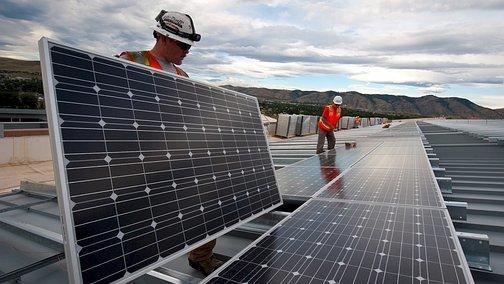oday’s green building industry is big business. Green and sustainable construction has evolved considerably since the movement began more than 20 years ago.Health advocates, communities and the market continue to drive new development in sustainable construction, which aims to use energy and water in an efficient manner, protect the health of occupants and minimize waste, pollution and environmental degradation. Advancements in technology, client and market demands for sustainable and energy efficient designs have resulted in a rise of the development and adoption of regulations and initiatives supporting the ideals of sustainable construction.A close look at the spending of this segment of the industry reveals its growth. Analysts expect sustainable construction spending to reach $224.4 billion in 2018, an increase of about $75 billion in just the past three years alone.
According to one research study, the U.S. market for green building materials is expected to add up to $69 billion in spending by 2019, an increase of $26 billion spent in 2014.
What exactly are green building materials? These are components made from renewable resources, are recyclable at the end of their life and are manufactured using environmentally friendly processes. Generally they are made from materials that are salvaged, recycled or waste content.
Healthy buildings: a trend that is here to stay
The construction of healthy buildings is gaining ground as owners and developers are realizing the benefits of healthy buildings, in particular an increase of natural light and better air quality.
Increasingly, more companies are demanding healthy buildings for their employees as studies show a direct relationship between worker productivity and air quality. The elimination of volatile organic compounds, VOCs, found in building products such as paints, carpeting and furniture, reduces side effects such as irritation of the eyes and lungs – and even potential long-term damage to the human body.
New guidelines are making a difference in how environments are built, too. For example, the WELL Building Standard launched in 2014, enhance the health and well-being of occupants by measuring, certifying and monitoring seven areas: air, water, nourishment, light, fitness, comfort and mind.
In addition, expect the Big Data revolution to impact green construction as data scientists make it easier for owners and the builders to compare the hazards of products and materials.
Other trends: Renewable Energy and Net Zero Energy
Solar, wind and geothermal energy continue their momentum as sustainable alternatives to traditional power sources. Solar panels are being integrated into everything from roof shingles to building facades and road pavers. Changes in the tax law could affect this industry, however.
Net zero energy buildings create as much renewable energy as the building consumes in a year. Those standards are important because residential and commercial buildings account for nearly 40 percent of U.S. energy consumption, according to the U.S. Energy Information Administration.
California is making strides in this area. The California Public Utility Commission has set “net zero” energy goals for all new residential construction by 2020 and commercial buildings by 2030. Although the net zero goals might be unrealistic for high-energy builders many schools and warehouses are pioneering this segment of construction.
Murfey Company is committed to environmentally responsible and resource efficient construction in its commercial and residential projects from start to finish. Murfey Company is Leadership in Energy and Environmental Design (LEED) certified by the U.S. Green Building Council. The LEED program provides rating systems for the design, construction, operation, and maintenance of green buildings. If you are interested in learning more about our construction and real estate development projects, please visit www.murfeycompany.com.

